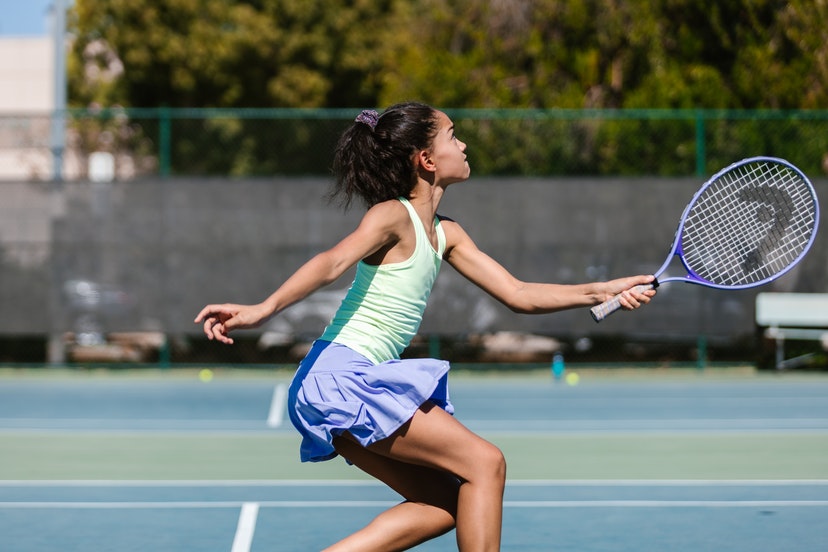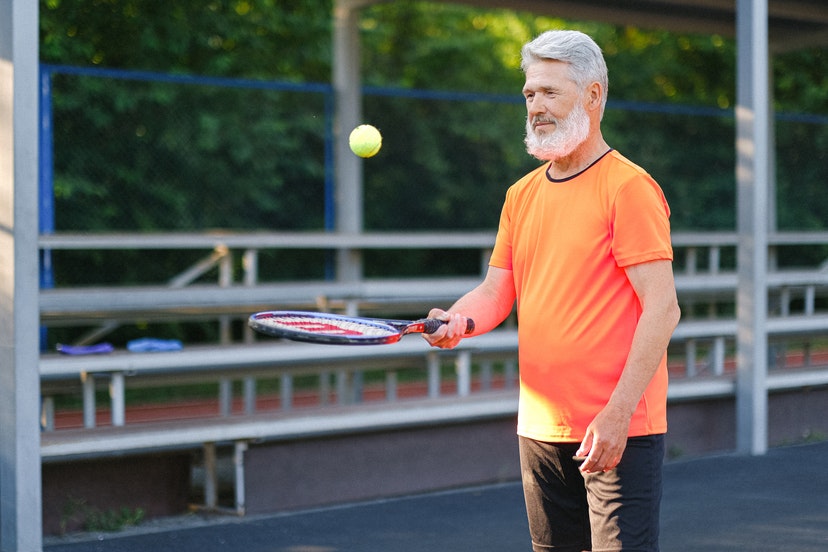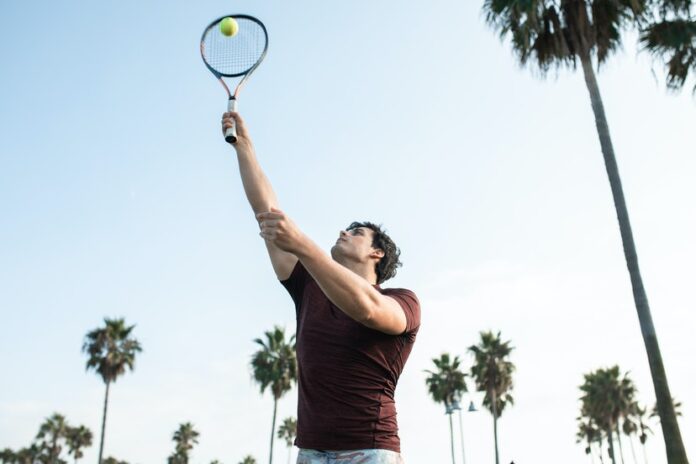Tennis is known as a sport that can be played on grass, clay, or hard courts. These matches, usually played outdoors, require high tempo, mobility, and conditioning. Matches, in which athletes sweat within specific rules, have become more systematic within specific organizations since the 19th century.
Singles and doubles matches occasionally feature tough competition. The world’s largest tennis events are the so-called Grand Slams. The Australian Open, the Roland Garros French Open, Wimbledon, and the US Open are events where the world’s best tennis players gather.
According to standards, the game is played on rectangular courts measuring 23.77 meters long and 8.23 meters wide. A net located at the center line separates the opposing sides. Throughout the game, players attempt to clear the net, which is 1.07 meters high, to reach the opposing side. Thin lines around the rectangular court define the court lines; the long sidelines are called sidelines, and the short endlines are called baselines.
How to Play Tennis and What Are the Rules?
In tennis, each player has freedom of movement on their designated side of the net. The game revolves around returning balls and trying to bounce a ball that the opponent can’t return, and then returning it to their court.
The player who causes the ball to go out of play after contact with the opponent also scores a point. In other words, the player who makes a shot that the opponent can’t return or causes the ball to go out of play scores a point. The points are played in the order of 15, 30, and 40 points. A total of six games are played to 40 points, and the winner of the six games wins a set. In any match with 3 or 5 sets, the player who wins 2 or 3 sets before their opponent wins the match.
- Tennis begins with one of the players serving.
- A point is scored if the ball goes into the net, is thrown out of bounds, or if the opponent cannot return it.
- A player who makes two consecutive errors while serving also scores a point for his opponent.
- When the ball touches the net and falls into the service area during the service, the shot is repeated.
- When a player serves, his opponent is waiting in his own court, on the line farthest from the net.
- A player who bounces the ball within his own court or touches the ball with a limb other than the racket is considered to have violated the rules.
- To win, the difference in points in games and sets must be at least 2.
- A draw is declared when both players score 40. In this case, a player scoring two points in a row determines the winner.
- If you score the first point in a down, you gain an advantage. However, if your opponent scores a point, you break the advantage.
- The game is controlled by the referee, who is positioned in a high chair next to the net.
- If a player loses a game without scoring any points, these games are called Love Games.

At What Age Should You Start Playing Tennis?
Ages 5 and 6 are considered the ideal age to begin playing tennis. From this age on, any child, teenager, or adult can begin playing. For aspiring professional athletes, the age range between 6 and 10 is considered crucial for their entry into the game. After age 10, the likelihood of turning professional decreases significantly. It’s emphasized that the chances of professional success in tennis diminish with age.
Tennis is a demanding sport, and building fitness, winning tough matches, and competing in fast-paced competitions all require time. Of course, not everyone who puts in the time and effort needs to become a professional. However, progress in tennis can be made through effort.

What Muscles Does Tennis Work?
Tennis is categorized as a cardio workout. By actively working all the body’s muscles, including the legs, hips, forearms, and back, tennis helps burn fat. However, sufficient muscle development isn’t achieved through tennis alone; it’s recommended to supplement your training with another sport or weight training.
What Should Tennis Clothing Be Like?
When tennis attire is mentioned, many people think of white sneakers , athletic shorts , or skirts. Collared t-shirts and sports hats also accompany the game. However, it’s difficult to perform in just any outfit, and clothing selection requires careful and specific consideration.
- Tennis attire should be comfortable. Two-piece outfits are generally worn to allow for freedom of movement.
- When playing tennis, you should choose breathable fabrics.
- Because women often make sudden and sharp movements during sports, they prefer sports bras that hold their breasts in place . This prevents long-term breast sagging and prevents athletes from losing focus during matches.
- Cotton clothes are generally preferred due to their moisture absorbency.
- When playing tennis outdoors, you should wear clothing that offers UV protection.
- You should wear durable sports socks while exercising, as it requires consecutive movements forward, back and side .

How to Choose a Tennis Racket?
- Tennis rackets weigh between 240 and 370 grams. Players are offered different racquets in light and heavy categories. Lightweight rackets are recommended for beginners.
- The distribution of weight on a racket is called balance. The balance point is sometimes at the handle, sometimes at the head. There are also rackets with even weight distribution. Rackets with a balance point of 33 cm are considered balanced. Rackets smaller than 33 cm are classified as light-headed, and rackets larger than 33 cm are classified as heavy-headed. The balance of a racket can be determined based on comfort during the swing. This is determined through experience and experimentation. Rackets with light heads are easier to control but may lack power, as these rackets are known to require greater effort from the player.
- Beginners use lightweight rackets, either medium-balanced or head-light.
- Rackets with heads larger than 105 inches are classified as large-head rackets, while smaller rackets are classified as medium or small-head rackets. Larger rackets are considered more advantageous for beginners.
- Racket handle thickness is calculated using the grip size. For example, thicknesses vary from 1 to 2, 3 to 4, and 5 to 5. The size where your palm meets your fingers when gripping the racket handle is considered ideal.
- Kodraj refers to the string spacing at the head of the racket. For example, you might see kodraj spacings of 16×18, 16×19, and 18×20. Of course, beginners prefer 16×18.

What are the benefits of playing tennis?
Those looking for reasons to do sports are convinced when they hear about the benefits of tennis:
- Because tennis is an individual sport, players’ self-confidence and ability to take responsibility increase rapidly.
- Tennis opens up a whole new social circle. You’ll also see that everyone is equal. You can dedicate years of hard work to tennis, building strong bonds. As a result, there’s a lot of social interaction in tennis.
- Tennis is generally an activity for people who are successful in their professional lives. Because it requires stability, it’s been said that those who dedicate themselves to tennis can become successful businesspeople in the future. The networking opportunities gained through tennis are also beneficial for those in their professional lives.
- Of course, the game of tennis supports the development of problem-solving skills.
- Your body works many muscles, which in turn supports physical and psychological well-being.



